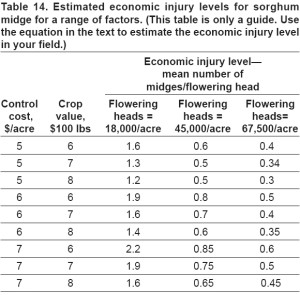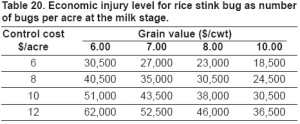 Maturity of sorghum fields varies widely across the Texas Coast. While some fields have had harvest aids applied and are being harvested this week, other fields are just beginning to head. Sorghum maturity is complicated even more in some fields which have parts of the field blooming while other areas of the field are at hard dough.
Maturity of sorghum fields varies widely across the Texas Coast. While some fields have had harvest aids applied and are being harvested this week, other fields are just beginning to head. Sorghum maturity is complicated even more in some fields which have parts of the field blooming while other areas of the field are at hard dough.
Varying maturity within a field makes for tough decisions on what to protect from insect pests. Will the young heads be mature when the more mature heads are ready for harvest? Can the areas of the field with different maturity be harvested separately?
We are finding midge in blooming heads of some fields and stink bugs and headworms can be found in many fields. Once the field has reached hard dough, it is no longer susceptible to economic damage from these insects.
When finding headworms smaller than 1/2 inch, remember these worms usually have low survival rates and they don’t feed much until they are larger. This is why the threshold for medium sized worms (<1/2 inch) is so much different than that of large worms (>1/2 inch).
Most fields still have sugarcane aphids at low levels. I have found fields nearing treatable levels of sugarcane aphids only to have the beneficial insects (lady beetles, syrphid flies, green lacewing larvae and parasitic wasps) reduce the populations to near zero within a few days.
As harvest nears, keep an eye out for increasing aphid numbers; especially on the flag leaf. Last year we saw aphids move from the leaves to the head following a harvest aid application. Aphid populations have began to increase in the Rio Grande Valley as they begin harvest. We may see a similar trend in our sorghum fields.
We have good economic thresholds for sorghum midge, rice stink bugs and headworms. These economic thresholds are available in two methods. One is on the internet at the links below and will give you an ET in insects per head.
Another way to look at the economic thresholds is insects per acre. See the tables below for this method of determining sorghum pest economic thresholds. These tables were extracted from Managing Insect and Mite Pests of Texas Sorghum.



